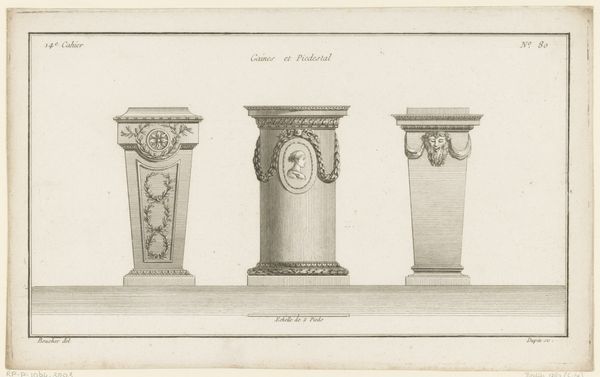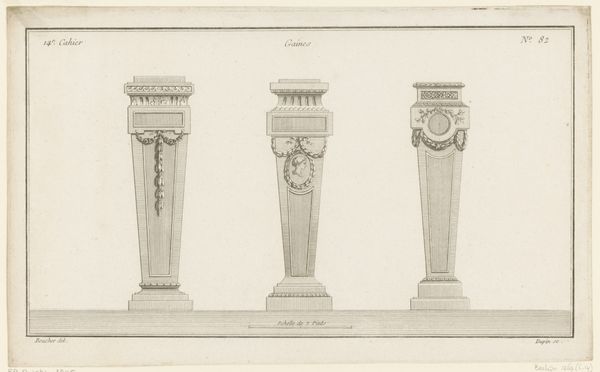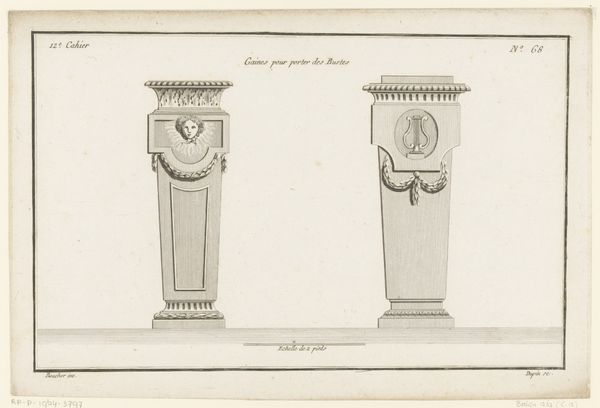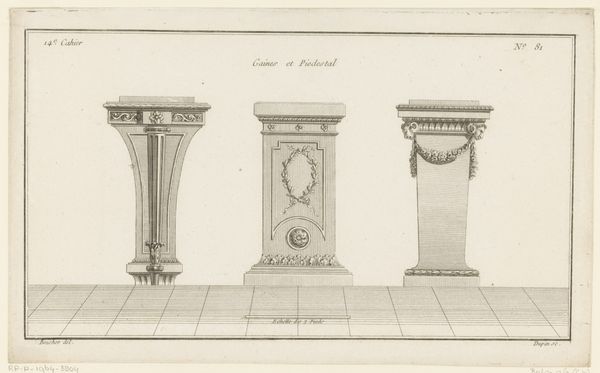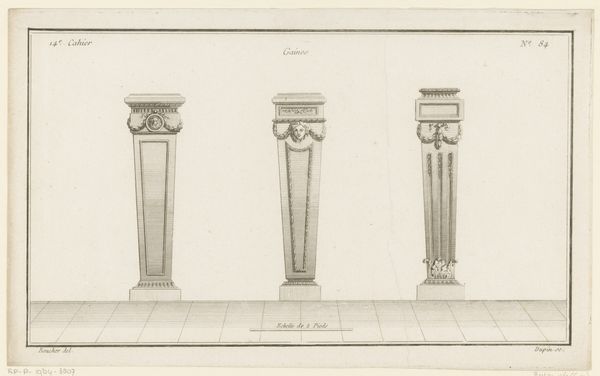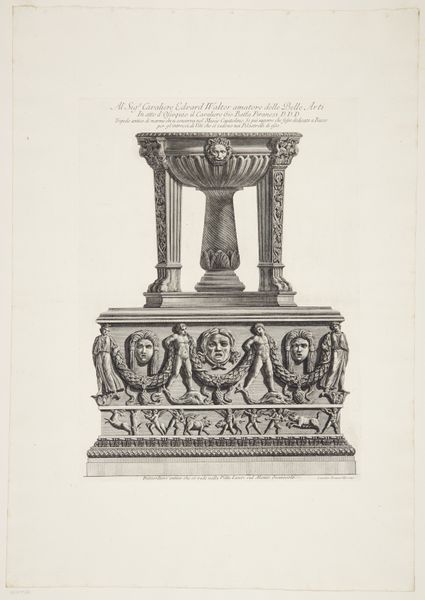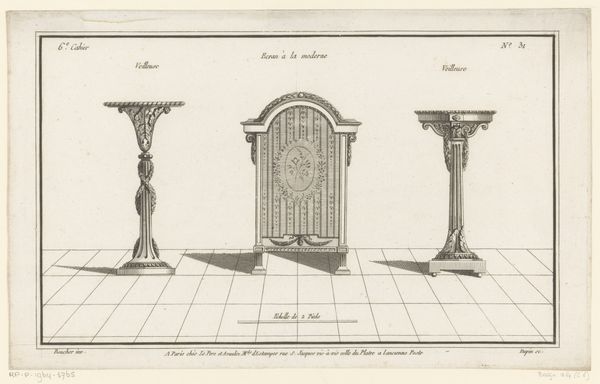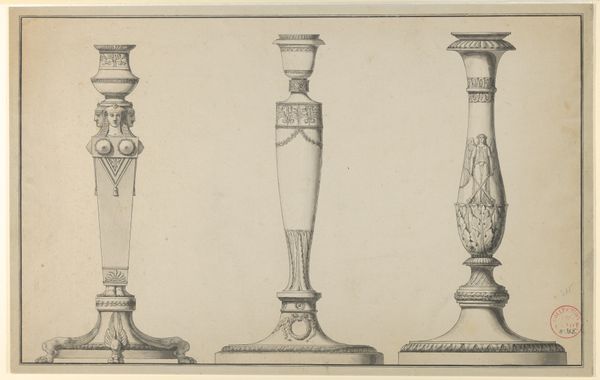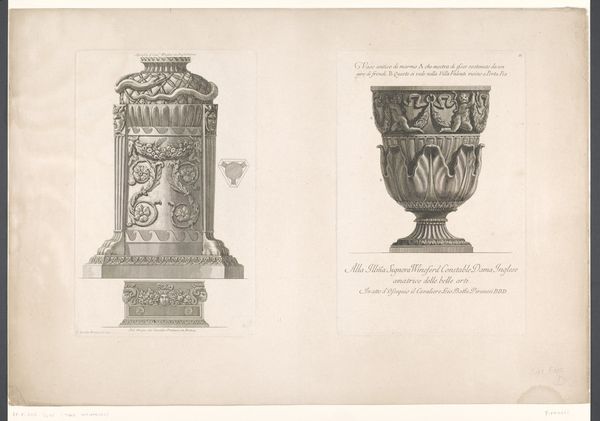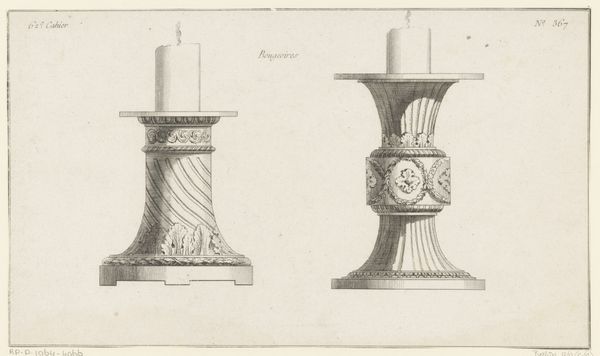
drawing, print, paper, engraving, architecture
#
drawing
#
neoclacissism
# print
#
paper
#
form
#
geometric
#
line
#
academic-art
#
engraving
#
architecture
Dimensions: height 203 mm, width 331 mm
Copyright: Rijks Museum: Open Domain
These three pedestal designs, made by Nicolas Dupin in the late 18th century, were rendered using etching, a printmaking technique known for its fine lines and precise detail. Etching allowed Dupin to meticulously represent the texture and form of these pedestals, emphasizing the inherent qualities of the stone they imitate. Notice the labor-intensive process involved in quarrying, shaping, and carving such objects. The designs reflect a period of intense interest in classical forms, adapted for the lavish interiors of the French aristocracy. The etching process itself mirrors the hierarchies of labor and class present in the production of luxury goods at the time. While Dupin conceived the designs, skilled artisans would have been responsible for realizing them in marble or other costly materials. Recognizing the intricate relationship between design, production, and social context helps us appreciate the full complexity of this artwork, and challenges traditional distinctions between fine art and craft.
Comments
No comments
Be the first to comment and join the conversation on the ultimate creative platform.

